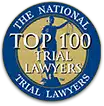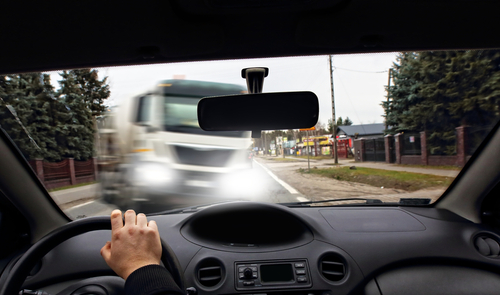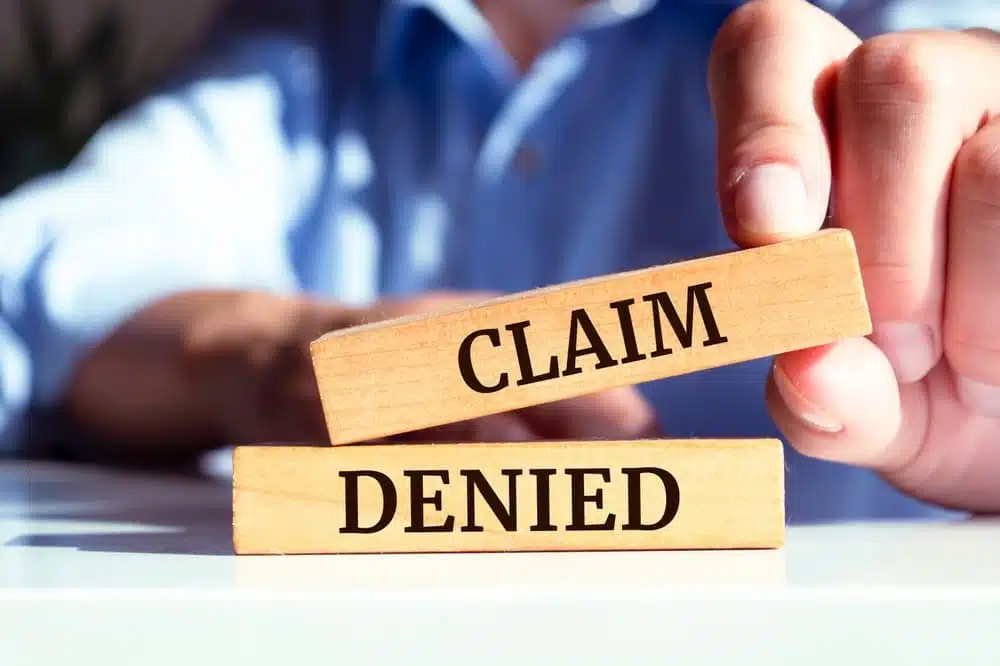
Did you know that rear-end collisions account for nearly one-third of all traffic accidents in the United States? These accidents frequently occur because drivers fail to maintain a safe following distance.
The widely recognized 3/6 Second Rule guideline helps prevent such collisions by encouraging drivers to keep a safe distance from the vehicle in front of them.
While this rule is a fundamental part of defensive driving, its relevance extends beyond just prevention. In legal proceedings, the 3/6 Second Rule plays a role in determining fault in rear-end collisions. Understanding how this rule applies to your case could help secure the compensation you deserve.
If you suffered a rear-end collision, The Rothenberg Law Firm is here to help you fight for justice and get the compensation you’re entitled to. Contact us today at 800-624-8888 for a free consultation.
The Basics of the 3/6 Second Rule
The 3/6 Second Rule is a simple yet effective method for maintaining a safe following distance on the road, reducing the risk of rear-end collisions. This rule provides a framework for drivers to adjust their spacing based on speed and driving conditions.
Understanding the 3-Second Rule
The three-second rule applies during standard driving conditions, such as clear weather and dry roads. Here’s how it works:
- Choose a Fixed Object: Select a stationary object along the road, like a sign or a tree.
- Count the Seconds: When the vehicle in front of you passes the object, begin counting: “one-thousand-one, one-thousand-two, one-thousand-three.”
- Maintain the Distance: If you reach the object before finishing the count, you’re following too closely and must increase your distance.
This rule helps ensure that you have enough time to react if the vehicle ahead stops suddenly, thereby minimizing the risk of a rear-end collision. As your speed increases, so does the distance covered in those three seconds, allowing the rule to adapt naturally to different speeds.
Expanding to the 6-Second Rule
The six-second rule comes into play under adverse conditions, such as rain, fog, or icy roads, where stopping distances significantly increase.
In these situations:
- Increase to Six Seconds: Count to six instead of three when passing a stationary object.
- Adapt for Weather and Visibility: This extended time accounts for reduced traction and visibility, providing extra time to respond safely.
By doubling the following distance, the six-second rule offers a greater margin of safety.
Legal Relevance in Rear-End Collision Cases
After a rear-end collision, the 3/6 Second Rule can help determine fault.
Insurance companies and legal teams often assess whether the trailing driver adhered to this rule to establish liability:
- Evidence in Court: Demonstrating that the trailing driver violated the rule can support claims of negligence, as it highlights their failure to maintain a safe following distance.
- Impact on Claims: Adhering to the rule can influence the outcome of personal injury claims, potentially affecting the compensation awarded to victims.
Causes of Rear-End Collisions
To understand why the 3/6 Second Rule is so pivotal to rear-end collision cases, it’s helpful to explore the root causes of these accidents. These crashes don’t just happen out of the blue–they’re often the result of specific behaviors or circumstances on the road.
By examining these causes, we can see how a simple rule like maintaining a safe following distance can make all the difference between a close call and a costly accident.
Tailgating
Tailgating, or following too closely behind another vehicle, is one of the leading causes of rear-end collisions.
When drivers fail to maintain an adequate following distance, they have less time to react to sudden stops or slowdowns by the vehicle in front.
- Lack of Reaction Time: Drivers who do not adhere to the 3/6 Second Rule often find themselves unable to stop in time when traffic slows down unexpectedly.
- Aggressive Driving: Tailgating is considered a form of aggressive driving, which not only increases the risk of accidents but can also lead to road rage incidents.
Distracted Driving
Distracted driving is another major contributor to rear-end collisions.
Common distractions include:
- Texting or Phone Use: Engaging with electronic devices takes drivers’ attention off the road, reducing their ability to maintain a safe following distance.
- Eating or Drinking: Consuming food or beverages while driving can divert focus and hands away from the wheel.
- In-Car Distractions: Adjusting the radio, talking to passengers, or using navigation systems can also lead to lapses in concentration.
The 3/6 Second Rule is particularly relevant in distracted driving cases, as it underscores the importance of maintaining a buffer that allows for unexpected events.
Speeding
Driving at excessive speeds can exacerbate the likelihood and severity of rear-end collisions:
- Increased Stopping Distance: Higher speeds require longer stopping distances, making adherence to the 3/6 Second Rule even more vital.
- Reduced Reaction Time: Speeding drivers have less time to react to obstacles or changes in traffic conditions, leading to more severe collisions.
Weather Conditions
Adverse weather conditions such as rain, fog, or snow significantly affect road safety:
- Slippery Roads: Wet or icy surfaces increase stopping distances, necessitating the six-second rule to provide additional safety margins.
- Poor Visibility: Fog or heavy rain can obscure a driver’s view, making it difficult to judge distances and requiring greater adherence to safe following practices.
Determining Fault in Rear-End Collisions
Determining fault in rear-end collisions is a crucial step in resolving personal injury claims and securing compensation for victims. The 3/6 Second Rule can play a significant role in establishing whether drivers maintained a safe following distance, thus highlighting negligence.
Role of the 3/6 Second Rule in Legal Cases
The 3/6 Second Rule provides a measurable standard for evaluating driver behavior in rear-end collisions. If a driver fails to follow the 3/6 Second Rule, it can serve as evidence of negligence, demonstrating that they did not maintain a safe distance, thereby contributing to the collision.
How Lawyers Establish Fault
- Police Reports: Officers at the scene often document their observations, including whether the trailing driver was following too closely. Lawyers can use this evidence to demonstrate violations of the 3/6 Second Rule.
- Expert Testimony: Accident reconstruction experts may use the 3/6 Second Rule to testify about the adequacy of the following distance, offering insights into how the collision occurred.
- Witness Statements: Eyewitnesses can provide accounts of the accident, corroborating whether the trailing driver maintained an appropriate following distance.
Impact of Weather and Road Conditions
Weather and road conditions can complicate fault determination in rear-end collisions.
However, the 3/6 Second Rule still serves as a guiding principle for assessing driver behavior under these conditions:
- Adverse Weather: If a driver fails to increase their following distance in bad weather, as recommended by the six-second rule, it can indicate negligence and contribute to their liability.
- Road Hazards: Drivers are expected to adjust their behavior based on road conditions, and failing to do so by not adhering to the 3/6 Second Rule can affect fault determination.
Comparative Negligence
In some cases, rear-end collisions may involve shared fault, where both drivers contributed to the accident.
- Shared Responsibility: If the leading driver engaged in erratic behavior, such as sudden braking or lane changes, they might share responsibility for the accident.
- Impact on Compensation: The degree of fault assigned to each driver can influence the compensation awarded. Comparative negligence differs from state to state, but in general, compensation decreases depending on the percentage of liability you hold.
Legal Rights and Options for Victims
Compensation Available
Victims of rear-end collisions may recover compensation to cover their losses:
- Medical Expenses: Compensation for current and future medical bills related to injuries sustained in the accident, including hospital stays, surgeries, rehabilitation, and medication.
- Property Damage: Reimbursement for the repair or replacement of your vehicle and any other damaged property.
- Lost Wages: Compensation for lost income due to missed work and any potential loss of future earning capacity if the injuries affect your ability to work.
- Pain and Suffering: Monetary compensation for physical pain, emotional distress, and decreased quality of life resulting from the accident.
Statute of Limitations
The statute of limitations sets a deadline to file a lawsuit:
- State-Specific Time Limits: Each state has its own statute of limitations for personal injury claims, typically ranging from one to three years. Missing this deadline can result in losing your right to pursue compensation.
- Exceptions and Extensions: Some circumstances, such as discovering injuries later or if the at-fault driver leaves the state, might extend the filing deadline. Consulting with a New York City car accident lawyer can help clarify these details.
How The Rothenberg Law Firm Can Assist You

Experience in Rear-End Collision Cases
We’ve handled countless rear-end collision cases, and we know what it takes to secure a successful outcome.
- In-Depth Knowledge: Our New York City car accident lawyer are well-versed in traffic laws and understand how critical the 3/6 Second Rule can be in proving fault. We’ll leverage this rule to build a compelling case that highlights the other driver’s negligence.
- Proven Track Record: We’ve achieved numerous victories for our clients in rear-end collision cases, obtaining settlements and verdicts that cover everything from medical bills to lost wages. Our past successes speak to our commitment and skill in representing victims of these accidents.
Comprehensive Legal Support
When you choose The Rothenberg Law Firm, you’re not just hiring a lawyer—you’re gaining a team dedicated to supporting you every step of the way.
- Free Case Evaluation: We offer a no-cost consultation to discuss your case and explore your options. We’ll review all the details, including how the 3/6 Second Rule might apply, to ensure we have a solid foundation for your claim.
- Thorough Investigation: Our legal team conducts a meticulous investigation to gather all necessary evidence. From police reports to eyewitness accounts, we compile everything needed to build a robust case demonstrating the other driver’s fault.
- Negotiation and Litigation: Whether it’s negotiating with insurance companies or representing you in court, we’re prepared to fight for your rights. If we can’t reach a fair settlement, we can take your case to trial and advocate fiercely on your behalf.
Client Success Stories
Nothing speaks louder than our clients’ success stories. We take pride in delivering results that make a real difference in people’s lives.
- Satisfied Clients: Our clients consistently praise our dedication, communication, and results. We focus on ensuring they receive compensation that truly reflects the extent of their injuries and damages.
- Noteworthy Cases: We’ve handled complex rear-end collision cases where the 3/6 Second Rule was fundamental in proving negligence.
Secure the Compensation You Deserve with The Rothenberg Law Firm
Are you struggling to recover from a rear-end collision and feeling uncertain about your legal rights? We understand the challenges you face, and we’re here to help you navigate this difficult time. Our team is committed to fighting for your rights and ensuring you receive the justice and financial support you need to rebuild your future.
Don’t wait until it’s too late—reach out to us today at 800-624-8888 for a free consultation. Let us shoulder the legal burdens so you can focus on healing and recovery.




